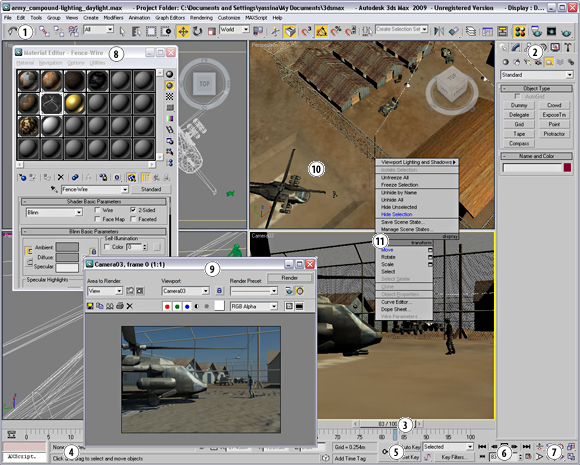 |
Main Toolbar |
| The main toolbar provides quick access to tools and dialogs for many of the most common tasks in 3ds Max. |
 |
 |
Quad Menu |
| When you click the right mouse button anywhere in an active viewport, except on the viewport label, a quad menu is displayed. The options available in the quad menu depend on the selection. |
 |
 |
Viewport |
| When you start 3ds Max, the main screen contains four equal-sized viewports. The one in the lower right is a perspective view, and the others correspond to the three views: top, front, left. By default, the Perspective viewport displays your scene in Smooth + Highlights mode, and the other three show wireframe views. You can choose different views to display in these four viewports as well as different layouts from the viewport right-click menu. |
 | |
 |
Command Panel |
| The command panel comprises six user-interface panels that give you access to most of the modeling features of 3ds Max, as well as some animation features, display choices, and miscellaneous utilities.
To switch between the different panels, click their respective tab at the top of the command panel. |
|
 |
Time Slider |
| The time slider lets you navigate along the timeline and jump to any animation frame in your scene.
You can quickly set position and rotation or scale keys by right-clicking the time slider and choosing the desired key from the Create Key dialog. |
|
|
